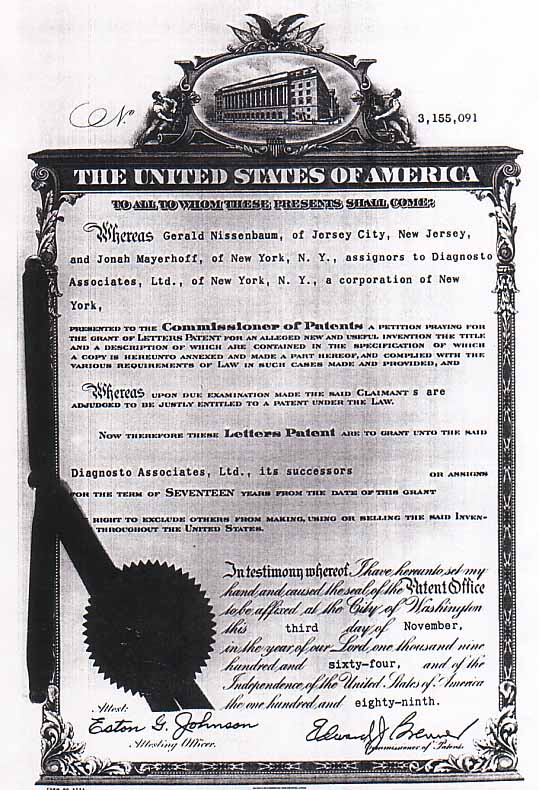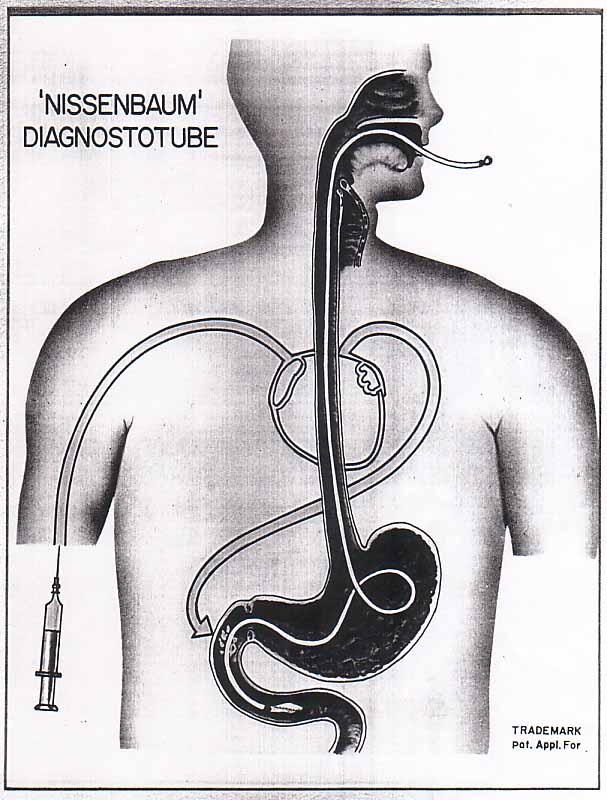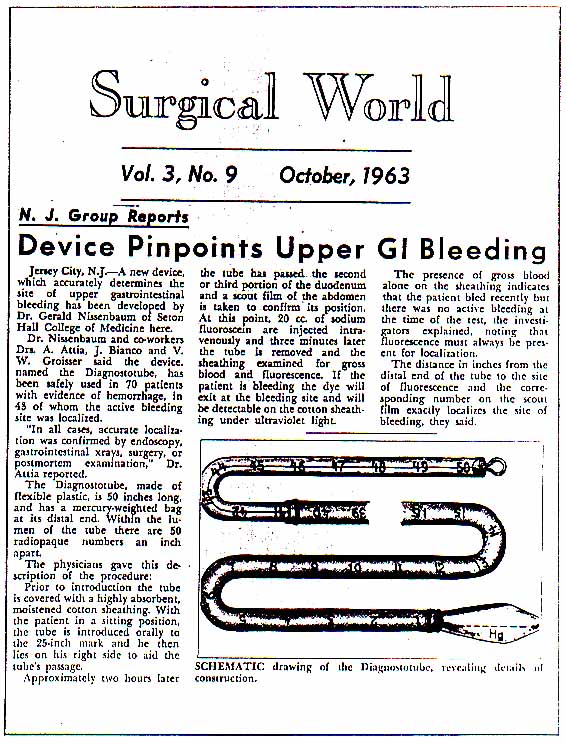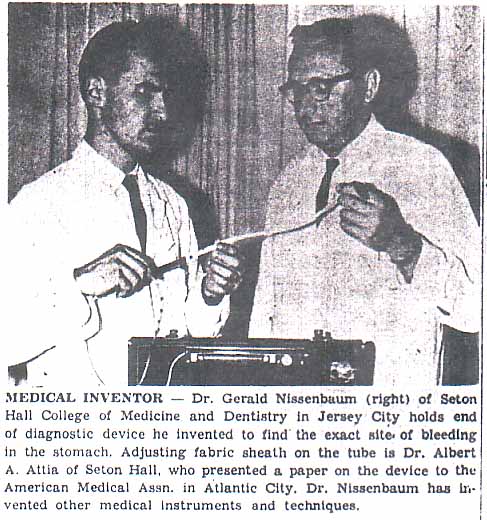Scientist
Even in his early youth and adolescence, Dr. Nissenbaum had a profound love of science. He was a deeply curious young man with a keen intelligence and amazing manual dexterity and precision. He had a lifelong passion to understand how things worked. One of his fondest childhood memories was purchasing a used, half-broken antique microscope which he used to explore the startling world of the protozoa. In high school, he was given special permission to utilize the facilities at the Biology laboratory of Yeshiva University. While there, he made the extraordinary discovery of Nissenbaum’s Fixative, the first-ever method of rapidly fixing ciliated protozoa to slides. This was nothing less than a revolution in the field of Microbiology and is now seen as one of the great advances of the twentieth century in this field (See article below).
As a young physician, he also invented the Nissenbaum Diagnostotube, which was used to localize the site of internal upper gastrointestinal bleeding. It is acknowledged as one of the major advances in Endoscopy of the early 1960’s. Finally, he developed a rotating bracket and accessories that were one of the first to allow physicians to generate color photographs of the digestive system.
The Story Behind the Discovery of Nissenbaum’s Fixative





